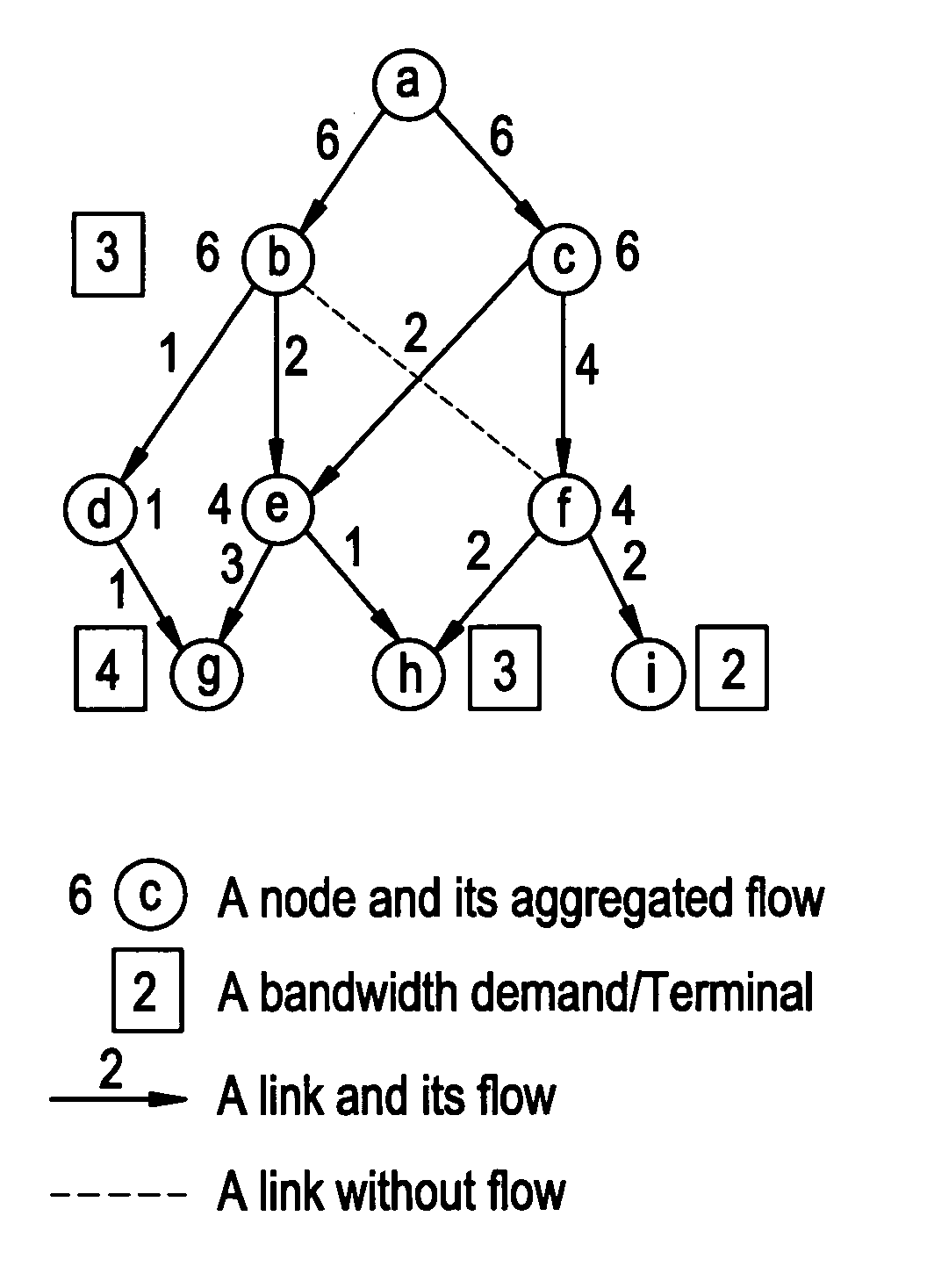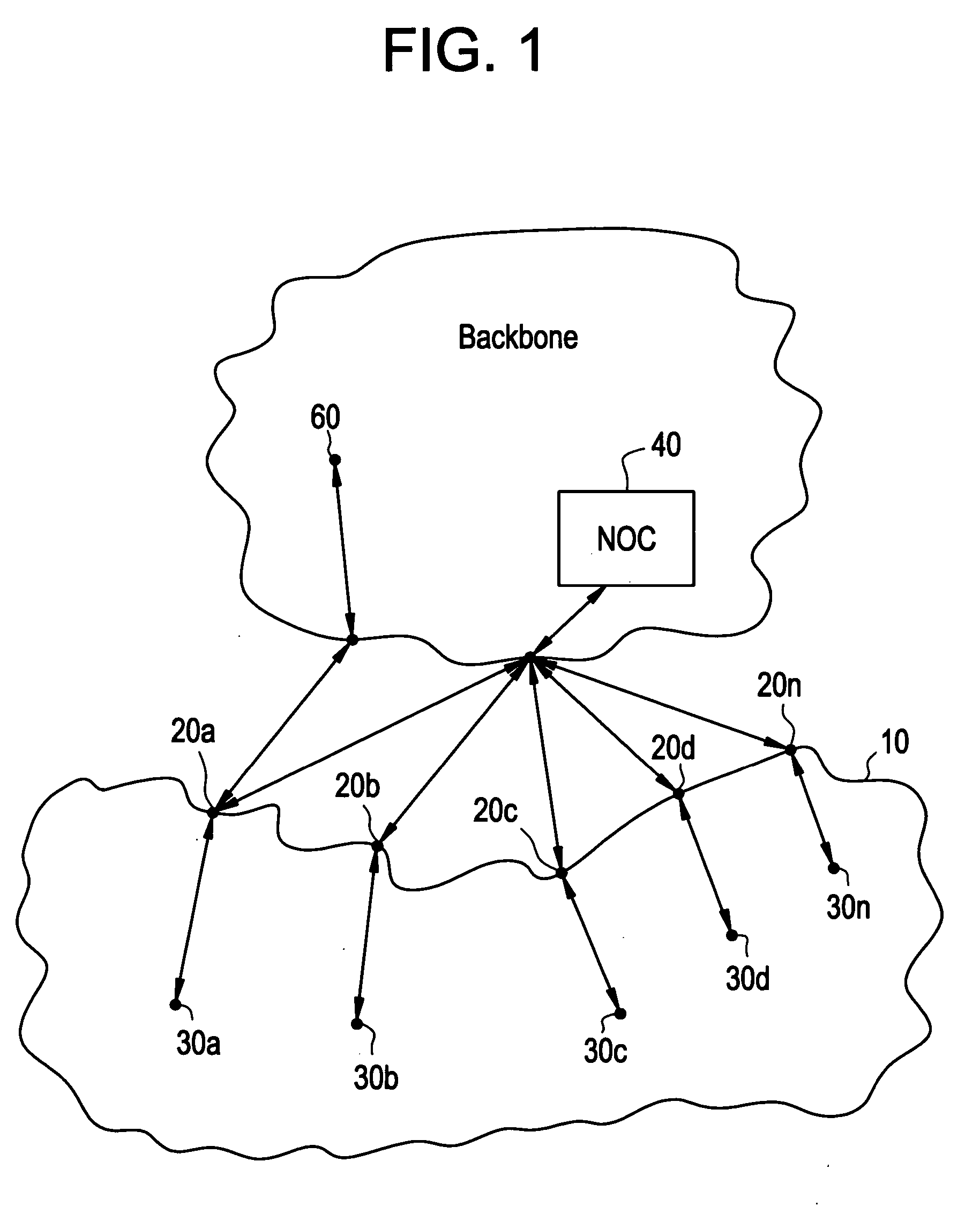Methods and devices for routing traffic using a configurable access wireless network
- Summary
- Abstract
- Description
- Claims
- Application Information
AI Technical Summary
Benefits of technology
Problems solved by technology
Method used
Image
Examples
Embodiment Construction
[0015] The present invention provides for the identification of primary routing paths used most often within a CAN to simplify the operation of wireless stations in, and to maximize the lifetime of, a static multi-hop wireless network.
[0016] Referring now to FIG. 1, there is shown a simplified illustration of a CAN 10. As shown CAN 10 includes one or more access point stations (“APs” for short) 20a,20b, . . . 20n and non-AP stations (“stations” for short) 30a,30b, . . . 30n (where “n” is the last AP or station). In one embodiment of the present invention, a network operation center or controller (“NOC”) 40 external to the CAN 10 is operable to determine the topology of network 10 as well as identify the primary paths associated with stations 20a,20b, . . . 20n and 30a,30b, . . . 30n. Thereafter, NOC 40 is further operable to configure each wireless station 20a,20b, . . . 20n and 30a,30b, . . . 30n with its respective, so-identified paths so that each station's operation may be simp...
PUM
 Login to View More
Login to View More Abstract
Description
Claims
Application Information
 Login to View More
Login to View More - R&D
- Intellectual Property
- Life Sciences
- Materials
- Tech Scout
- Unparalleled Data Quality
- Higher Quality Content
- 60% Fewer Hallucinations
Browse by: Latest US Patents, China's latest patents, Technical Efficacy Thesaurus, Application Domain, Technology Topic, Popular Technical Reports.
© 2025 PatSnap. All rights reserved.Legal|Privacy policy|Modern Slavery Act Transparency Statement|Sitemap|About US| Contact US: help@patsnap.com



